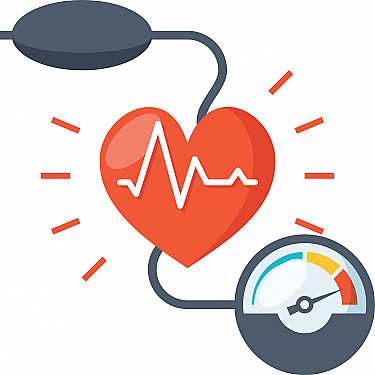Links between sleep brain waves and blood sugar control.
Diabetes is a disorder that makes it difficult for the body to regulate blood sugar levels.
When the body stops generating or responding to the hormone insulin, which controls blood glucose (sugar), blood glucose levels rise too high.
Poor sleep quality and higher blood sugar levels are related, according to research. A recent study has discovered that certain deep sleep brain waves are connected to the control of blood sugar levels.

The researchers hypothesise that elevating particular deep-sleep brain waves could lower the incidence of type 2 diabetes.
More than 6% of the world’s population currently has diabetes, which is on the rise globally. The American Diabetes Association estimates that 37.3 million Americans, or 11.3% of the population, have diabetes, with more than 35.4 million of those having type 2 diabetes.
96 million Americans aged 18 and older had prediabetes in 2019, which is a condition in which blood glucose (sugar) levels are increased but not high enough to be classified as diabetes.
The risk factor for type 2 diabetes, prediabetes, frequently has no symptoms and can go unnoticed for a very long time.
To lower the chance of acquiring type 2 diabetes, the National Institutes of Health recommend many lifestyle modifications, including:
- if a person is overweight, reducing 5–7% of their body weight and maintaining that weight loss
- getting up to 30 minutes of exercise five times each week
- consuming fewer servings and making an effort to consume nutritious foods the majority of the time.
What connection exists between sleep and diabetes?
Numerous studies have connected poor blood glucose control and sleep issues. Raised blood glucose levels and a higher risk of type 2 diabetes are all linked to inadequate sleep length, poor sleep quality, and sleep disorders such insomnia and sleep apnea.
Now, a study has postulated a mechanism through which deep sleep is associated with lower blood glucose levels and contends that sleep quality rather than quantity is a better predictor of blood glucose levels.
Researchers discovered a connection between some deep sleep brain waves and better blood sugar regulation the next day.
According to the study, which was published in Cell Reports Medicine, deep sleep enhances the body’s sensitivity to insulin by stimulating the parasympathetic nervous system, leading to better blood sugar regulation.
According to study co-author and researcher Vyoma D. Shah of the Centre for Human Sleep Science, “the association with blood glucose control appears to be strongly explained by a link between deep sleep oscillations and specific alteration in insulin sensitivity, rather than insulin synthesis, storage, or secretion.”
The study noted that “the causal chain by which this occurs in humans is still unexplored.”
Brainwaves suggest a metabolic connection
Although she was not engaged in this study, Fiona McLoone, a research communications officer at Diabetes UK, commented:
“This study gives us more information about how the brain regulates blood glucose levels while we sleep; however, more research is required to determine whether assistance with improving sleep could benefit those who have type 2 diabetes or are at risk for developing it.”
Previous studies have suggested that decreased glucose metabolism is related to a shortening of slow-wave, or deep, sleep.
In a laboratory experiment, it was discovered that healthy young people’ insulin sensitivity significantly decreased when slow-wave sleep was inhibited, which in turn reduced glucose tolerance and raised the chance of developing diabetes.
Researchers found that clusters of strong wave ripples from the hippocampus, which happen during non-REM sleep, caused a drop in blood sugar levels in the rats within 10 minutes.
In the current investigation, the researchers first examined 647 people’s nocturnal polysomnography results as well as their next-morning glucose and insulin readings. They subsequently conducted their trials once more on a different 1,996 subjects.
They were looking to see if coupled non-REM spindles the night before were linked to better peripheral blood glucose levels the next day.
Other variables known to affect blood glucose management, such as age, gender, race, body mass index (BMI), hypertension, quantity of sleep, and sleep quality, were accounted for in both groups.
They discovered that the coupling of slow waves and sleep spindles during deep sleep was connected to better blood glucose regulation the next morning.
How could REM sleep affect blood sugar?
The parasympathetic nervous system’s activity, according to the authors, may be the cause of the influence on blood glucose.
They discovered that deep sleep activated this area of the nervous system, causing the body to become more sensitive to insulin, causing the body to absorb more glucose from the bloodstream into cells, so reducing blood sugar.
As Shah commented that the results of our study are not applicable to all deep sleep in general, but rather to the coupling (nearly simultaneous or time-locked occurrence) of slow oscillations and spindles in deep sleep, despite the fact that there are numerous techniques that can alter brain waves during sleep, including electrical, audio stimulation, and better sleep hygiene to increase the ease of falling asleep and the likelihood of staying asleep.
The connection might not be direct
The researchers issue a warning that their results do not prove a causal link between better blood glucose regulation and deep sleep. They do, however, offer a theory as to how the link occurred.
According to Shah, “based on a seminal study in rats that inspired this study, it is plausible that during sleep, hippocampal sharp wave ripples which we index by measuring slow oscillation-spindle coupling in this study send a signal to a relay station called the lateral septum, which in turn modulates blood glucose levels.”
The authors also make the case that monitoring brain waves during deep sleep could be a non-invasive way to determine how well someone is controlling their blood sugar.
What will the upcoming research focus be?
We learned from Shah that “our findings are the first to demonstrate an association between these particular deep sleep brain waves (slow oscillation-spindle coupling) and glucose regulation, reiterating the significance of sleep in the clinical management of hyperglycemia.”
“We hope this study paves the way for future research that can better understand the causal mechanisms underlying these associations, and eventually, develop therapeutics to enhance slow-oscillation spindle coupling during sleep, to better control blood sugar levels,” she continued.
She also outlined possible areas for further study, such as measuring glucose levels at various times and examining whether slow oscillation and spindle coupling may be used to change glucose regulation or vice versa.
However, as McLoone cautioned, “Some people are more at risk of developing type 2 diabetes than others, and getting a good night’s sleep is an essential component of good health, but currently the best evidence for reducing the risk of developing type 2 diabetes involves eating a healthy, balanced diet and keeping active.”
REFERENCES:
- https://www.medicalnewstoday.com/articles/deep-sleep-brain-waves-are-linked-to-blood-sugar-control
- https://healthnews.com/news/sleep-and-diabetes-scientists-explain-the-link/
- https://www.technologynetworks.com/neuroscience/news/deep-sleep-brain-waves-predict-blood-sugar-control-375953
- https://www.techexplorist.com/deep-sleep-brain-waves-linked-blood-sugar-control/
For Diabetes medications that have been suggested by doctors worldwide are available here https://mygenericpharmacy.com/index.php?therapy=13








